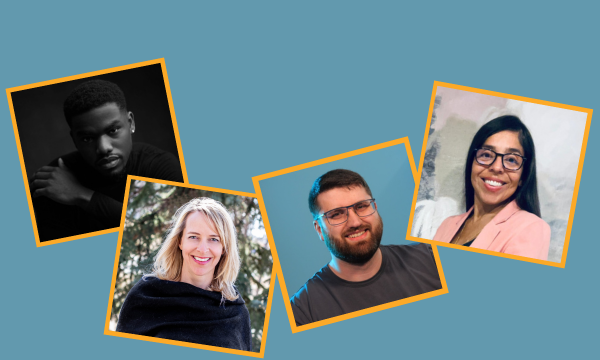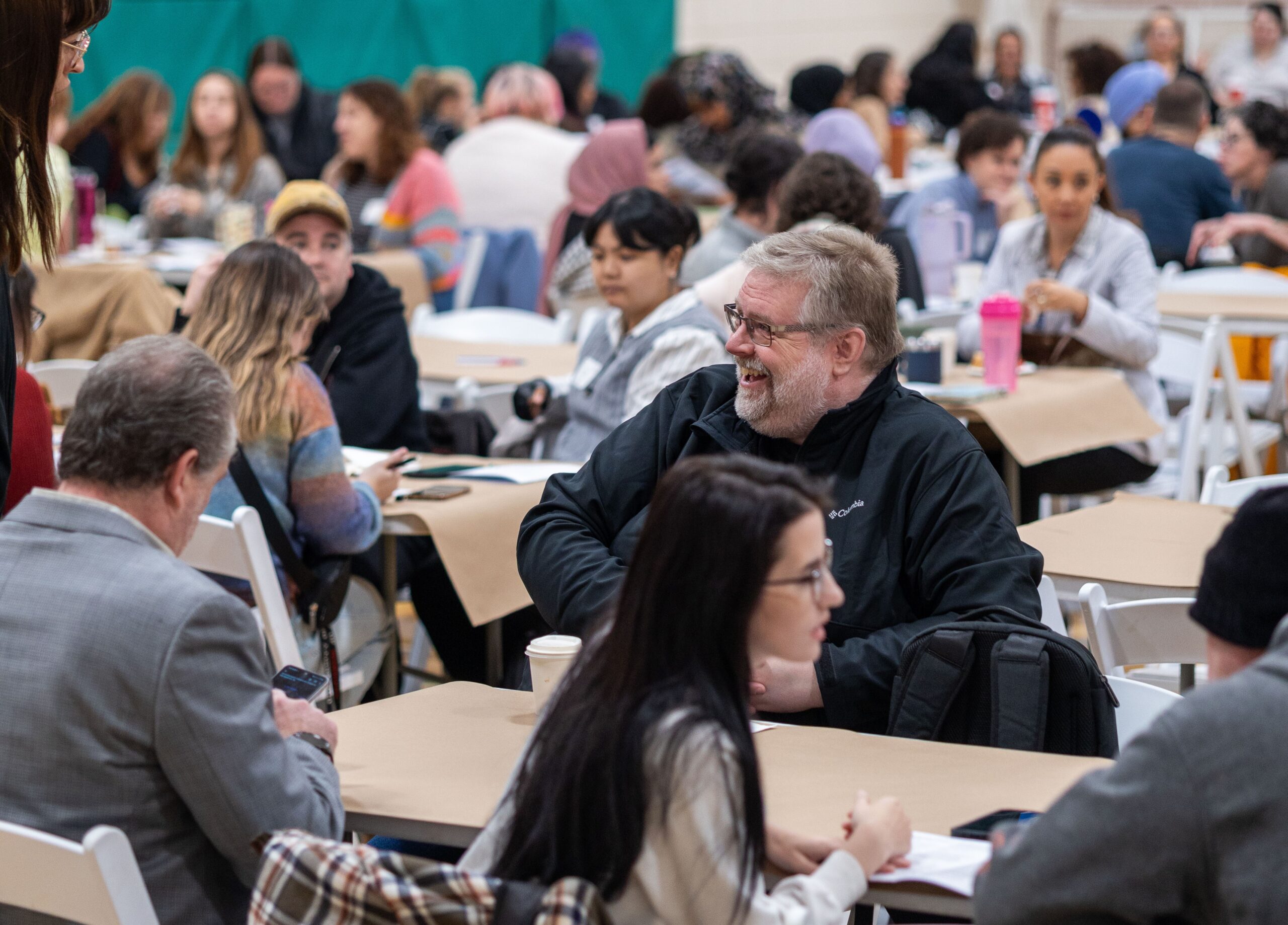 Carol Anne Hilton on the concept she invented to pull Canada into a better future.
Carol Anne Hilton on the concept she invented to pull Canada into a better future.
Carol Anne Hilton wants Canadians to add a new word to their dictionary: Indigenomics.
Definition: The practice of bringing an Indigenous perspective to economic and social development.
Hilton, who is of Nuu-chah-nulth heritage, launched the word four years ago as a Twitter hashtag: #Indigenomics.
Canada, says Hilton, needs a new language to move toward reconciliation. It’s a language she speaks to the federal government after being appointed advisor to the finance minister. She speaks it as CEO of her company Transformation, which helps First Nations with economic and social development. She’s also director of the B.C. First Nations Health Society, a member of the World Fisheries Trust chair of the Victoria Community Micro-Lending Society, and teaches a class on Indigenomics at Simon Fraser University. And she’s authoring a book, Indigenomics: A Global Power Shift.
The Tyee interviewed Hilton on the patio of a café in Sidney, not far from her home in Victoria. Here is what she had to say…
On why it’s time for Indigenomics:
“The legal precedents that First Nations have set over even the past 20 years — with those milestones we have inserted ourselves into the reality of the Canadian economy.
“Canada’s government hasn’t necessarily caught up with that. Canadians don’t have the language that says ‘I understand what free, prior and informed consent is, I understand what consultation is, I understand what a referral system is.’
“That’s where a new language needs to be built from. Canadians need to understand how and why First Nations are important within the regional and national economies. I believe that Indigenomics is a conscious claim to the modern expression of what is an Indigenous economy.
“I’m Nuu-chah-nulth from west coast of Vancouver Island and we have a concept hish yuk ish tsa wak, meaning everything is one and interconnected.
“So when we develop forestry companies or we develop projects we look at it from that worldview of everything as one or interconnected.
“So how do you make decisions from that point? Indigenomics looks at building sustainability and looks at long-term ecological alignment with our values. Those values – respect, sustainability or being careful with resources — that worldview isn’t something that’s just Nuu-chah-nulth.
“So you take that concept of hish yuk ish tsa wak and you will find the same concept said in a different way in all these different Indigenous communities.
“I think that mainstream economics needs to bring in that perspective because it’s largely been absent. The development of the Canadian economy has been based on the establishment of acts to be able to access resources that required the removal of First Nations from the land they used as their resource base.
“But now the access to resources has shifted considerably and Canada really needs to be able to identify: what is our relationship with First Nations now?
“The impacts that Canadian First Nations are building through business can now be measured.
Understanding First Nations values, worldview, stories and relevance to the Canadian economy — that’s really where Indigenomics’ role is within Canada. So I think the time is right.”
On being the daughter of residential school survivors:
“My parents went to residential school, my grandparents went to residential school. Being the first generation out, I feel very much connected to building a reality that places indigenous people in a positive place. In a place around wholeness, around well-being, around community development and then removing those social symptoms like poverty and those kinds of aspects. That’s really what I focus on me myself and within the work that I do.
“I focused on business and economic development and was able to build some companies and good presence within First Nations communities with corporations and with government.”
On Twitter as conversation changer and creative catalyst:
“Four years ago I started a Twitter account, and I became really aware the content that I was most interested in was around Indigenous topics, business, economic development, economy.
“And then I started tweeting stories and scanning what I saw as relevant to Canadian identity and understanding our relationship to First Nations people. What were the stories being told in the media? Were they fear-based or sensationalized or uncertain? Did they create an environment that furthered racism?
“So then that’s where I put Indigenous and economics together to create Indigenomics. I created a thread of thought that not only followed the stories but inserted indigenous thinking and inserted what was important from a First Nations view.”
On teaching Indigenomics at SFU:
“I think I’ve been teaching Indigenomics at SFU for three years now. What I find really exciting about teaching in the Community Economic Development program is that it’s for mainstream change-makers who want to identify that not only is there a way to do economic development differently, but it needs to be inclusive. I think Indigenomics acts as a platform for building understanding.
“Out of the Twitter threads I was able to take information apart and look from a First Nations perspective at economic development or business projects [and use that as a basis for teaching]. If a project was going ahead or not going ahead what was the origin of the conflict and how do you view that from a First Nation worldview?”
On why Indigenomics is key to reconciliation:
“I heard a South African speak up in Clayoquot Sound a number of years ago and he talked about economic apartheid. After apartheid ended in South Africa what we ended up with was that concept of economic apartheid.
“And very much the reserve system of Canada is economic apartheid. We exist within these small isolated places that do not have the means within that land base or resource base to be able to create economies.
“For example, the Nuu-chah-nulth people took Canada to court because they live on little tiny reserves here in B.C. and the size of those reserves were intended because we were supposed to be able to access the resources from the water — from the sea.
“But the Fisheries Act and all the licensing systems then prevented us from doing that. So we were no longer able to access our traditional economy.
“The United Nations declaration on the rights of Indigenous peoples talks about our right to continue as people, to continue with our identity, our education, our language, build our own economies today.
“So economic reconciliation is that ability to create what is required for us today in 2016 and going forward.”
On how her company Transformation uses Indigenomics:
“We look at social and economic development as parallel processes. Nations need to be able to build business structures but they also need to create social outcomes.
“So those social outcomes are often expressed as social symptoms — like high suicide or high poverty. But that ability to shift and create positive social outcomes has to be linked to economic development.
“And economic development has to be linked to social identity. They have to be interconnected.
“There’s an area in the Nass Valley in B.C. called the Nisga’a area. They were one of the first modern day treaties. In that area there’s four villages of the Nisga’a tribal council.
“We did a lengthy prosperity project. And what we looked at was aligning their governing system and their business system with the four villages and looking at how members identified with that going forward.
“So what did prosperity mean from a Nisga’a perspective? How did this system align to create business outcomes? How were members seeing themselves in their own future of prosperity?”
On what she is advising the federal finance minister:
“I think that there’s a lot of room for the government to engage with First Nations on a nation-to-nation perspective around unfolding budgets.
“First Nations are coming to the table hungry. Very much like communities like Attawapiskat. There is a need to invest to build solid business and economic structures that are inclusive to Canadian First Nations and lets them participate, and be recognized. These structures need to be built on the foundation of our role in the history of the development and the continuation of Canada.
“There’s this concept that if you don’t have First Nations at the table you’re at a strategic disadvantage.
“Having that strategic advantage of recognizing the value and role of First Nations — I think Canada, with this new government, is just at the point of being able to do that. I don’t necessarily think they’re able to do that as fast as everyone would like. But I think my role on the economic growth council can support that.”
On why Indigenomic thinkers might say no to a project traditional economists embrace:
“Some big projects largely disrupt our ability to go into the future with our identity and practices and beliefs intact.
“You look at the Lelu Island [conflict over whether to build an LNG plant in the Skeena River estuary]. Indigenous people opposing the project are saying the number one priority is fish habitat. You can give us $2 billion instead of $1 billion and the answer will still be “no.” Fish is more important than money.
“It’s not just ‘no’ because we don’t feel like it or ‘no’ like, ‘eh, I don’t like that person or that company.’ It’s actually a ‘no’ that’s founded in reality and identity.”
On where to get started learning about Indigenomics:
“Be engaged with the Indigenomics discussion online. Right now, one of the biggest issues is the Truth and Reconciliation recommendations. Know what those say and why they are important.”
On the moving beyond colonization:
“My work is really about shifting our modern reality as First Nations people. Coming from 150 plus years of colonization and shifting that to building a positive, healthy, whole reality. That’s what I see as important in our communities and that’s what I focus on at Transformation. Transforming governance, administration, business and building structures to support our relevance and wholeness in 2016.
“According to Canadian history, we are not supposed to be here as First Nations people. We were supposed to have been exterminated through policy or complete removal.
“But the fact that there’s a blossoming, evolving First Nation population within Canada speaks to the need to build a relationship that’s nation to nation.”
Written by Megan Devlin and originally published by TheTyee.ca on June 3, 2016
ECONOUS2016 Opening Day 2, Lunch Ouverture Jour 2, Dîner
 Megan Devlin is a freelance multimedia journalist and student at the UBC Graduate School of Journalism. She conducted this interview while completing a practicum at the The Tyee. Follow her on Twitter here.
Megan Devlin is a freelance multimedia journalist and student at the UBC Graduate School of Journalism. She conducted this interview while completing a practicum at the The Tyee. Follow her on Twitter here.




